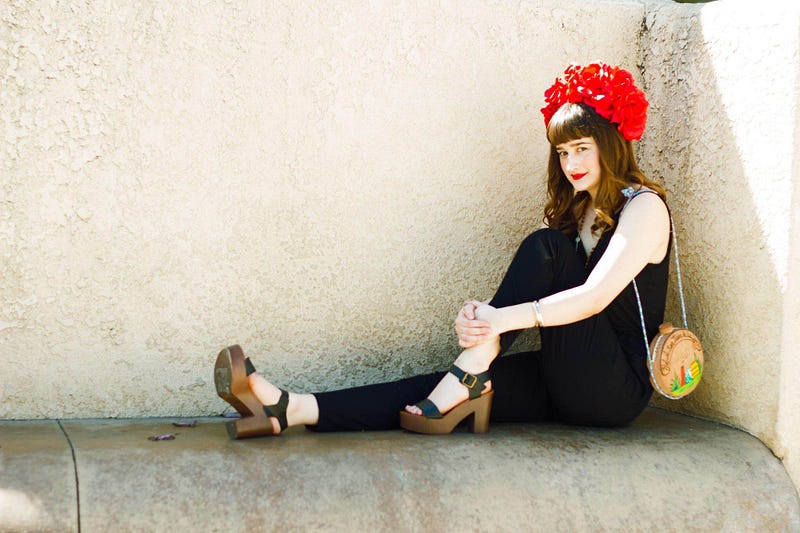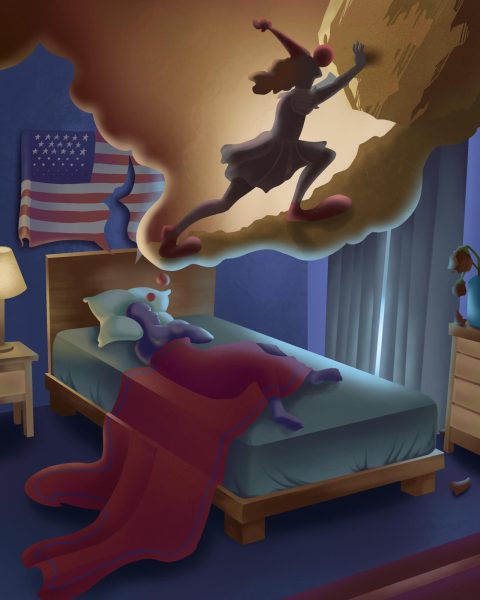Actually, I’m Not White.
Part 1. Light skinned Latinas: Privileged, outcast, and judged by their community

Part 1. Light skinned Latinas: Privileged, outcast, and judged by their community
They see the difference. They feel the difference. They don’t talk about it. There is a hierarchy within the Latino community that exists both in Latin American countries and the United States, that determines who can be beautiful and who can be successful.
A Latina’s appearance is not limited to stereotypical “Latina” features—dark brown hair, dark brown eyes, mocha complexion—some Latinas also have naturally red or blonde hair and light colored eyes. The socially constructed hierarchy deems light skinned Latinas, or güeras, who have European features, beautiful, smart and trustworthy while morenas, Latinas with darker skin and more indigenous features, cannot be beautiful and could never aspire to be more than a maid or a nanny.
Güera Genesis Chavez-Caro, a 20-year-old student at San Francisco State University said that in the Latino culture, the lighter someone is, the prettier they are while the darker they are, the uglier they become. She said that Latinos aim to be more white because that is what the ideal beauty is. “I’ve heard people tell my [dark skinned] cousins ‘Oh put sunscreen on because you’re going to get dark!’ whereas with me, they told me, look at your skin and how nice and bright and pretty it is. I love your rosy cheeks.”
While güeras benefit more from this type of hierarchy, they struggle with intersectionality issues that are unique to them. Light skinned Latinas are caught between two cultures, American and Latin American, and do not perfectly fit in with either culture regardless of how they choose to identify themselves.
Alyssa Mendoza, a 22-year-old student at Holy Names University in Oakland, Calif., is offended when people, especially Latino people, assume she is “white washed” simply because she is light skinned. “I’ve been told that I don’t understand what it’s like to be Mexican. Just because I speak English well and eloquently doesn’t make me any less Mexican. [Someone that is] ‘white washed’ is someone that is negligent of their culture. I acknowledge that I have indigenous blood in my veins even if it doesn’t look like I do. I am and always will be proud of where I come from.”
Patty Delgado, 23, who is a full blooded Mexican, has light skin and light brown hair and often gets mistaken for being Jewish or Slavic. She grew up in a predominantly Latino part of Southern California. Even though she is Mexican, she didn’t feel like she fit in at school because her music taste and style of dressing, what she referred to as “shopping mall punk,” were deemed as “white.”
“When people [in our community] see that you are into some sort of subculture it’s like ‘why are you trying to be white?’ because you’re not interested in the majority interest—air force 1s, G Unit, 50 Cent,” said Delgado. “This one girl gave me a hard time every single English class. She would say, ‘Why is your hair green? Why are you wearing converse? Why are you trying to be so white?’”
As much as she says it humors male suitors, ignorant employers, or Latino restaurant employees, Delgado takes offense to others’ false assumptions about her ethnicity.
“When others assume that I am white, they strip me of my culture.”

Chavez-Caro feels she always has to prove herself to other Mexicans, particularly dark complected ones, because of her light complexion. “Whenever I speak Spanish, it has to be perfect. I have to know every little detail about where my parents are from because if I don’t, I’m not ‘Mexican’ enough.”
Mendoza said she has also felt that she was not Mexican enough at times.
“People have made me feel ashamed because I call myself Mexican. It’s hurtful to feel you don’t belong in your own community.”
Being able to pass for being white, like most güeras are, doesn’t guarantee acceptance by white people. Light skinned Latinas also experience racism on top of sexism, even in a work environment. On her 15th birthday, Mendoza’s coworkers had cake and pizza during their lunch break to celebrate when her white, male boss walked in and disrupted the party.
Mendoza said, “[My boss] told me, ‘Happy Birthday Kiddo. Congratulations on not getting pregnant.” Mendoza didn’t realize the connotation of that statement at the time and the power it would have over her. She recalled feeling ashamed for a long time after her boss made racist comments to her and her mother.
Delgado, a graphic designer by trade, has also experienced racism in the workplace and said she feels racist commentary is only said in front of her because she is light skinned. “People want to bond with me over racist commentary because they think that I’m white so I won’t say anything but I’m not white.”
When designing greeting cards for Cinco de Mayo that were intended to be aimed toward the Latino community, Delgado was met with ignorance from her Creative Director. “My creative director showed me an image of a Chihuahua wearing a sombrero and serape with salsa in the background. She was like ‘Isn’t this so cute? Isn’t this so funny?’ I was so overcome with anger.”
Delgado struggled with whether or not she should confront her creative director on it or remain professional. She couldn’t believe her creative director couldn’t remember she was Mexican. Regardless of the racism she encountered while at work, Delgado admitted that she doesn’t think she would have the same opportunities if she were darker complected. “People connect on these superficial, racial profiles. People feel a sense of community with people that look like them. We live in a world where white people dominate public spaces and professional spheres.”

Mariela Arellano, a 21-year old student at California State University, Los Angeles said that in Mexico, people don’t blatantly single someone out for being güera or morena but that skin color driven stereotypes remain in place. “Some of my cousins look down on people who are darker than them. Not all of them are like this but people in Mexico look at it like ‘you’re dark, so you must be poor and not educated.’”Just like in the United States, in Latin America, lighter skin is associated with education, wealth and power. Darker skin and more indigenous features are associated with living in poverty and being uneducated.
While Mendoza maintains that her struggle to feel accepted in her community is valid, she recognizes that the racism she experiences will never compare to the racism her dark skinned relatives and friends experience. She had an experience when she was visiting her family in Mexico where her darker complected cousin was called a very derogatory term, mayate, and was compared to a dark chocolate candy by an elderly woman. “Being the joker that [my cousin] is, he laughed at it but you can only imagine what it’s like to be called that. Me being light skinned, and being called ‘white washed’ or ‘gringa’, hurts me but I can only imagine how much those comments hurt him. Their racism is more hurtful. For me, it’s just an issue of not feeling validated as a Mexican but for them it’s being told they are too Mexican or too brown and that’s wrong on so many levels.”
Even though Chavez-Caro is not white, she acknowledges that she has white privilege because of her light complexion.
“I can go into other spaces and live in a white man’s world when [dark skinned Latinos] can’t. They will be judged before they even open their mouth or show their credentials whereas I can just walk in.”
Chavez-Caro sometimes feels guilty as identifying herself as a brown person or person of color, POC, because she feels her struggles aren’t equivalent to other brown struggles but maintains that she is a brown person regardless. “I have different struggles but I do have a brown struggle because I didn’t grow up in a rich area and I didn’t go to great schools. I didn’t get those white privileges. I grew up in a predominantly Latino community with everyone’s parents working two minimum wage jobs. My upbringing is brown which is why I identify is brown. My skin may not literally be brown but my upbringing is brown.”
Part 2: https://substance.media/scrub-the-brown-away-a24777ac81bb
Photo illustration by Adam Ernesto Fuentes and Cynthia Schroeder
Substance is a publication of the Mt. San Antonio College Journalism Program. The program recently moved its newsroom over to Medium as part of a one-year experiment. Read about it here.







